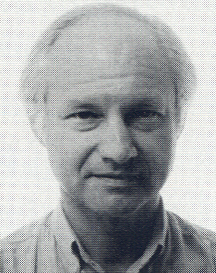First Glance
004
“Do not learn the way of the nations,” implores Jeremiah (10:1). The prophet reserves his bitterest scorn for idol worship, declaring idols worthless and an illusion. But what were these idols, how did they look and what were they made of? In “Jeremiah’s Polemic Against Idols,” Philip J. King draws on archaeological evidence to provide some answers. His discussion of the god-images created by the Babylonians and Assyrians explains how these gods were fashioned and worshiped, giving a concrete context to Jeremiah’s poetic diatribe.

King, a leading authority on archaeology and the Hebrew Bible, is professor of biblical studies at Boston College. Among his recent books are Jeremiah: An Archaeological Companion (Westminister/John Knox, 1993) and Amos, Hosea, Micah—An Archaeological Companion (Westminister, 1988).
They have been called “Magna Carta of civilized society.” Yet the Ten Commandments, while always ten and containing essentially the same rules of conduct, are numbered differently in different religious traditions, explains Ronald Youngblood in “Counting the Ten Commandments.” Youngblood offers intriguing solutions to such problems as why the commandments are not always numbered in the same way and why there were two stone tablets for them, not just one.

A professor at Bethel Theological Seminary in San Diego, Youngblood specializes in the languages and texts of the ancient Near East, including Mesopotamia. His most recent publication is The Book of Genesis: An Introductory Commentary (Baker, 1991).
Just hours after the Last Supper, Jesus was arrested and brought before the high priest Caiaphas as a criminal. Religious authorities could have seized Jesus even earlier, after he attempted to throw the merchants out of the Jerusalem Temple. They were spurred to act only later, however, apparently by something that happened at the Last Supper. What did Jesus say, do or eat at this meal to make it his last? The answer lies in one of the best-known speeches of the New Testament “Take, eat. This is my body… This is my blood.” Jesus’ words have been invoked over the centuries during the Christian Eucharist, the ritual meal of bread and wine that symbolizes unity with Jesus. But despite their familiarity, these words have been misunderstood for nearly 2,000 years, writes Bruce Chilton in “The Eucharist—Exploring Its Origins.” Most Christians believe that the words refer to Jesus’ own body and blood. Not so, says Chilton. Unable to reform the Jerusalem Temple sacrifices, Jesus used his meal as a substitute offering: thereby undermining Temple practices and jeopardizing his life.

An expert on the New Testament and Targums, Chilton is Bernard Iddings Bell Professor of Religion at Bard College, in Annandale-on-Hudson, New York. His dozen books include The Temple of Jesus (Penn State Press, 1992) and Beginning New Testament Study (Eerdmans and SPCK, 1986).
Jesus’ words at the Last Supper would have sounded oddly familiar to his 12 disciples, according to our second article on the Eucharist. When Jesus adopted bread and wine as substitutes for the flesh and blood of Temple sacrifices, he incorporated a presentation formula that had been long uttered by priests performing sacrifices at the Temple, argues Bernhard Lang. In “The Eucharist—A Sacrificial Formula Preserved.”

A professor of religion at the University of Paderborn, in Germany, Lang wrote his most popular book, Heaven: A History (Yale Univ. Press, 1988), now translated into six languages, with Colleen McDannell. Lang’s previous BR article is “Afterlife—Ancient Israel’s Changing Vision of the World Beyond,” BR 04:01.
We’ve Moved
Our new address is 4710 41st Street NW, Washington, DC 20016. Our customer service number remains 1–800-221–4644. Subscription question should be sent to PO Box 7027. Red Oak, Iowa, 51591, or call 1–800-678–4444.
A Note on Style
B.C.E. (Before the Common Era) and C.E. (Common Era), used by some of our authors and often used in scholarly literature, are the alternative designations corresponding to B.C. and A.D.
“Do not learn the way of the nations,” implores Jeremiah (10:1). The prophet reserves his bitterest scorn for idol worship, declaring idols worthless and an illusion. But what were these idols, how did they look and what were they made of? In “Jeremiah’s Polemic Against Idols,” Philip J. King draws on archaeological evidence to provide some answers. His discussion of the god-images created by the Babylonians and Assyrians explains how these gods were fashioned and worshiped, giving a concrete context to Jeremiah’s poetic diatribe. King, a leading authority on archaeology and the Hebrew Bible, is professor of biblical studies […]
You have already read your free article for this month. Please join the BAS Library or become an All Access member of BAS to gain full access to this article and so much more.
